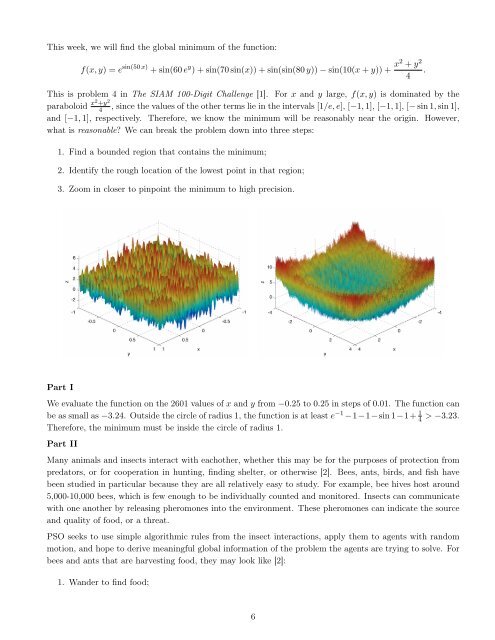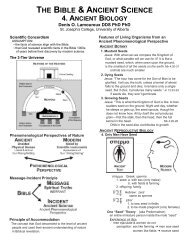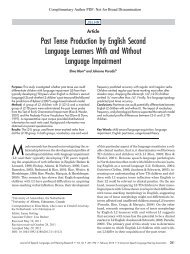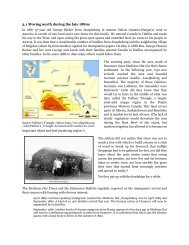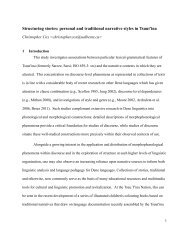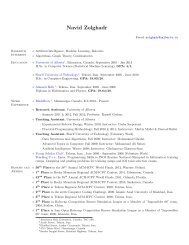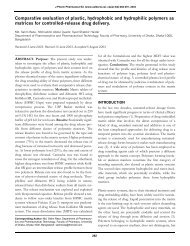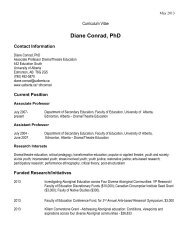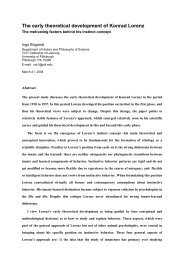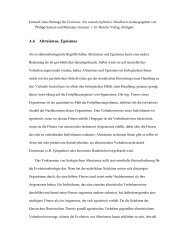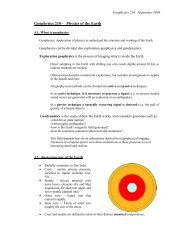MATH 209, Lab 5
MATH 209, Lab 5
MATH 209, Lab 5
You also want an ePaper? Increase the reach of your titles
YUMPU automatically turns print PDFs into web optimized ePapers that Google loves.
This week, we will find the global minimum of the function:<br />
f(x, y) = e sin(50 x) + sin(60 e y ) + sin(70 sin(x)) + sin(sin(80 y)) − sin(10(x + y)) + x2 + y 2<br />
.<br />
4<br />
This is problem 4 in The SIAM 100-Digit Challenge [1]. For x and y large, f(x, y) is dominated by the<br />
paraboloid x2 +y 2<br />
4<br />
, since the values of the other terms lie in the intervals [1/e, e], [−1, 1], [−1, 1], [− sin 1, sin 1],<br />
and [−1, 1], respectively. Therefore, we know the minimum will be reasonably near the origin. However,<br />
what is reasonable? We can break the problem down into three steps:<br />
1. Find a bounded region that contains the minimum;<br />
2. Identify the rough location of the lowest point in that region;<br />
3. Zoom in closer to pinpoint the minimum to high precision.<br />
Part I<br />
We evaluate the function on the 2601 values of x and y from −0.25 to 0.25 in steps of 0.01. The function can<br />
be as small as −3.24. Outside the circle of radius 1, the function is at least e −1 −1−1−sin 1−1+ 1 4 > −3.23.<br />
Therefore, the minimum must be inside the circle of radius 1.<br />
Part II<br />
Many animals and insects interact with eachother, whether this may be for the purposes of protection from<br />
predators, or for cooperation in hunting, finding shelter, or otherwise [2]. Bees, ants, birds, and fish have<br />
been studied in particular because they are all relatively easy to study. For example, bee hives host around<br />
5,000-10,000 bees, which is few enough to be individually counted and monitored. Insects can communicate<br />
with one another by releasing pheromones into the environment. These pheromones can indicate the source<br />
and quality of food, or a threat.<br />
PSO seeks to use simple algorithmic rules from the insect interactions, apply them to agents with random<br />
motion, and hope to derive meaningful global information of the problem the agents are trying to solve. For<br />
bees and ants that are harvesting food, they may look like [2]:<br />
1. Wander to find food;<br />
6


